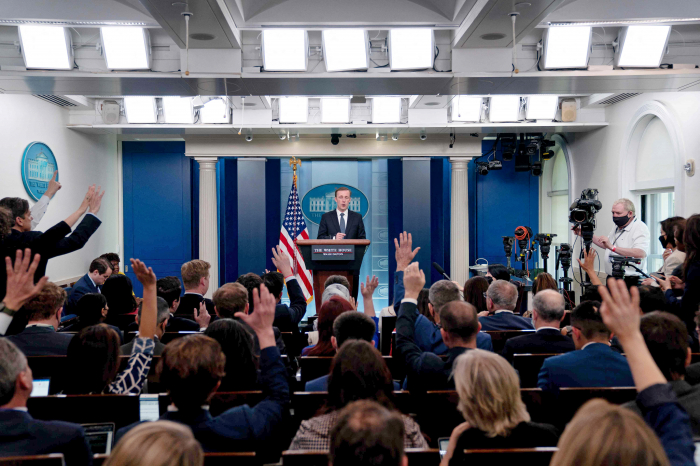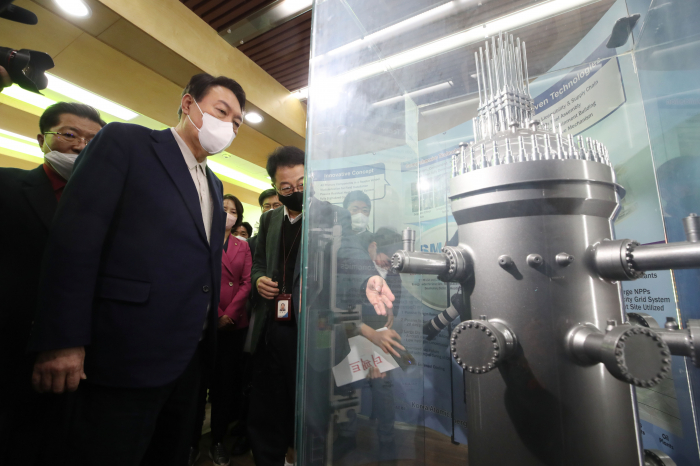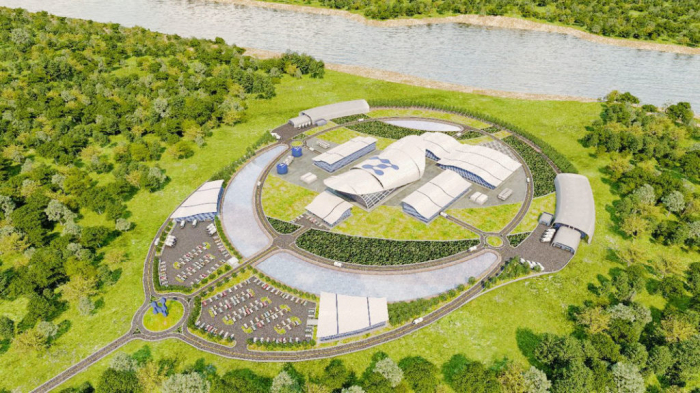Seoul, Washington to bolster small nuclear reactor tech alliance
The allies' 'iron-clad' pact is aimed at countering Moscow and Beijing's growing nuclear power
By May 19, 2022 (Gmt+09:00)
LG Chem to sell water filter business to Glenwood PE for $692 million


Kyobo Life poised to buy Japan’s SBI Group-owned savings bank


KT&G eyes overseas M&A after rejecting activist fund's offer


StockX in merger talks with Naver’s online reseller Kream


Mirae Asset to be named Korea Post’s core real estate fund operator



South Korean President Yoon Suk-yeol will meet with his US counterpart President Joe Biden this Saturday for a summit meeting in Seoul.
The two leaders are expected to pronounce their strengthened alliance on a number of next-generation nuclear technologies – most notably small modular reactors (SMRs.)
Multiple sources within Korea's Executive Office of the President told The Korea Economic Daily that officials in Seoul and Washington are in the final phase of negotiations to include technology cooperation on SMRs and the resumption of the High Level Bilateral Commission (HLBC) in their summit declaration.
International relations experts are bullish the upcoming announcement will cement the allies’ shared commitment to collaborating on the broader technology sector -- beyond semiconductors and rechargeable batteries.
The SMRs are the smaller nuclear reactors of 300 MWe equivalent or less. That output is only a third of conventional nuclear reactors with 1,000-1,500 MWe. A megawatt (MW) refers to 1 million watts of electricity and a megawatt electric (MWe) refers to 1 million watts of electric capacity.
They are designed with modular technology using module factory fabrication, pursuing economies of scale series production and short construction times.
Experts often describe the SMR business as a game-changer in the future of energy as the smaller reactors are safer than conventional ones and can be installed inland and in isolated regions.
IRON-CLAD ALLIANCE
Traditionally, there have been two main pillars holding up the alliance between South Korea and the United States: the military, based on the Mutual Defense Treaty, and the economy, on the back of the Korea-US Free Trade Agreement.
The South Korean presidential office explains the upcoming summit will add another pillar to the alliance with a possible treaty on cutting-edge technology such as nuclear energy, semiconductors and space exploration.
The official alliance between Seoul and Washington dates back to 1953 at the conclusion of the Korean War. The two sides signed the Mutual Defense Treaty, which serves as the foundation of the two nations' comprehensive alliance to this day.
Discussions on the resumption of the High Level Bilateral Commission are forecast to continue right up until the summit scheduled to kick off on May 21, according to people familiar with the bilateral relations.
The high-level commission is tasked with discussing matters of mutual interest in the field of atomic energy, and continuously developing a comprehensive, strategic nuclear partnership.
In particular, the participants must discuss ways of safe decommissioning, stable supply of nuclear fuel, and as well as the means to expand personnel exchange of atomic experts within their own nuclear policy frameworks.
The HLBC was launched in 2016 following the revision of the ROK-US Atomic Energy Agreement the year prior. The joint effort came to a halt in 2018, hit by an intellectual dispute.
A presidential official said: “We are working to resolve the intellectual property issue between the two countries in order to resume the work of HLBC.”

INTELLECTUAL PROPERTY
The companies in question are Korea Electric Power Corp. (KEPCO) and the Pittsburgh-based Westinghouse Electric Corp.
Naju-based KEPCO received an order from Saudi Arabia back in 2017 and said its APR-1400 was wholly built with technology that belongs to South Korea. Westinghouse is of the opinion that the facility contains US technology.
The difference in opinion as to who owns the intellectual property led to the halting of the government-level commission during the Moon Jae-in and Donald Trump presidencies.
“It is important for Seoul to assure Washington that the two countries share a common goal in atomic energy and to increase the pie that they can take (on the world stage),” Jeong Yong-hoon, professor of Nuclear and Quantum Engineering at Korea Advanced Institute of Science & Technology (KAIST) said.
EMERGENCE OF RUSSIA, CHINA
Academics and politicians alike say the strengthening of the two allies’ technological alliance on small modular reactors is aimed at countering Beijing's and Moscow's advances in the sector in recent years.
China and Russia were the main beneficiaries of the halt in the joint building of nuclear reactors by South Korea and the US.
Out of 50 nuclear reactors to be built by 2027 around the globe, China is building 15 of them – becoming the world’s No. 1 builder in the sector. Russia follows with 12 orders.
While China is building mostly on its own land, Russia is building new reactors in Turkey, Iran, Bangladesh and more.
In the same period, the United States is building two and South Korea is constructing six new reactors.
The US has not built a new nuclear reactor for 32 years since 1979. On March 28 of that year, the Three Mile Island Unit 2 reactor in Pennsylvania had a partial meltdown, the most significant accident in US commercial nuclear power plant history.
The world's largest producer of nuclear power resumed the building of nuclear reactors in 2011 but has yet to regain its past glory.
South Korea, for its part, has not received any new orders during the five years in which the Moon administration was executing the nuclear phase-out scheme.
Once Seoul and Washington resume the High-Level Bilateral Commission, industry insiders forecast that so will overseas orders from other countries to build SMRs.
GEOPOLITICS
The demand for atomic energy has increased substantially following the war on Ukraine that broke out earlier this year.
Russia has halted the export of its natural gas and oil to a number of countries, resulting in skyrocketing energy prices.
The price of Dubai crude oil reached $105.53 per barrel on Wednesday, a 58% surge from a year ago. The price of an MMBtu rose to $8.37 from just $3.01 over the same period.
Industry insiders are hopeful the robust technological alliance between Seoul and Washington over the small modular reactors could change the course of rising prices.
SMRs require less water for power generation compared to their larger counterparts and thus are ideal for building in inland regions.
Also, as their output is smaller, they are thought to be useful in remote areas that suffer the most from the lack of energy.
In the private sector, South Korea and the US are already collaborating in technological development.

Samsung C&T Corp. has partnered with Oregon-based NuScale Power, the leader in SMRs in the United States to discuss ways of moving into the global small reactor building business.
SK Group, for its part, signed an MOU with TerraPower in Washington. Founded by Bill Gates, TerraPower is a nuclear reactor design and development engineering company.
Write to In Yeop Kim, Jee Abbey Lee at inside@hankyung.com
Jee Abbey Lee edited this article.
-
 EconomyYoon administration to launch strategic committee for semiconductors
EconomyYoon administration to launch strategic committee for semiconductorsApr 22, 2022 (Gmt+09:00)
4 Min read -
 Venture capitalAI startup OnePredict gears up for $25 mn funding round
Venture capitalAI startup OnePredict gears up for $25 mn funding roundFeb 04, 2022 (Gmt+09:00)
2 Min read -
 EnergySamsung C&T to invest $70 mn in US nuclear fission tech provider
EnergySamsung C&T to invest $70 mn in US nuclear fission tech providerFeb 03, 2022 (Gmt+09:00)
2 Min read


